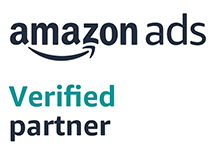Away from the bright perception of eCommerce sellers making constant profits, encountering a mountain of opportunities, and scaling sales every day, the plague of a common industry problem, RTO orders, is often sidelined.
Returns To Origin (RTO) is a common term in the eCommerce industry - often known as the “nightmare of all sellers”, for all the right reasons.
RTO refers to the non-deliverability of a package to the buyer and its return to the seller's address. While there can be many reasons for the non-deliverability of a package, the consequences of sending it back to the warehouse only add up to the seller’s expenses - significantly increasing the handling costs for processing such orders.
Studies show that every 1 in 3 orders is returned to the origin.
No matter what the number of orders or the value of orders you derive, as an eCommerce brand, getting your RTO’s in check is of major importance. Especially when - if neglected - it can go up to 30% for some e-commerce market players!
Here are three levels to tackle this situation
1. Website Level :
- Promote prepaid orders by incentivizing the buyer and reducing COD percentage. (10% discount on prepaid orders). Mention prepaid offers on the checkout page clearly as a top banner.
- Offers can be set in Razorpay and when someone makes a purchase using Razorpay as the payment gateway, the offer can be availed. For example, Set 10% off using Razorpay (this includes cards, NetBanking, UPI, etc).
- Avoid charging additional fees for COD which reduces the conversion rate. A better way to give discounts on prepaid.
- Helping the buyer in entering the accurate address by providing prompts. Customize it according to the country. Eg. For India Gali number, Village, etc. might make more sense. Use custom fields of Landmark, Door Number to increase delivery rate. Have phone number as a mandatory field.
- Validate Pincodes and Phone Numbers before an order is placed.
- It’s crucial to mention standard delivery timelines on the product page to avoid irrelevant Add-to-carts. Let’s say a person wants the product within 3-4 days but the usual delivery timeline is 7+ days, the order will become an RTO in case he/she orders without knowing the delivery estimates.
- Do mention exchange/return policies as well clearly.
-
In checkout, disable the COD option for specific states where you receive high RTO orders. COD can also be disabled for specific pin codes.
2. Marketing Level :
- Run Google shopping ads – To get better intent quality intent traffic vs. purely impulse traffic.
- Exclude last 30 days customers in retargeting campaigns – To ensure they don't see a better price of the product.
- Focus on organic traffic via Influencer, regular posts on Facebook, Instagram, etc.
- If the RTO % is extremely high, try to change the targeting to a limited number of cities. Prefer running campaigns on top 120 or 222 cities instead of PAN India, when you operate at a low to medium scale.
- Exclude the locations where the RTO is higher. This can be done for cities, states, or even specific pin codes. (Exclusions are only for prospects)
- Try lookalike of Delivered Orders instead of Purchases.
- Exclude certain states in India which generally have a high RTO rate – like Bihar, UP, North East, etc.
- Make sure that potential reach doesn’t get very limited after this exclusion.
3. Operational/Logistics Level :
- Keep the user engaged even after they have placed the order. SMS/E-mail communication after order placing is a good idea.
- Calls to all people for COD orders are also a solution - the cost incurred for doing this will still be much lower than the cost of an RTO. If this isn’t doable the following can be adopted-
If the address seems sketchy, call the buyer and ask for confirmation.
Call the buyer for all high-value orders (High-Value orders will be subjective).
- Make sure the delivery period is short; usually, the longer the product takes to be delivered, the higher are the chances of RTO.
- Make sure your logistics partner contacts the buyer either via call or text. It is best to confirm the time of delivery via phone.
- Logistics Partner should re-attempt the delivery in case of failure to deliver the first time.
- Using third-party applications: There are quite a few applications available in the market to identify fraudulent transactions. We would recommend using tools such as Third Watch. It can help in identifying the risky orders before shipping, so the customers can be fully verified before shipping.
Acceptable RTOs industry-wise:
| Industry | RTO % |
| Apparels | 10-20% |
| Footwear | 10-15% |
| Health & Wellness | <10% |
| Jewellery | 10-15% |
*RTOs % can differ case-to-case basis.





-1.png)






